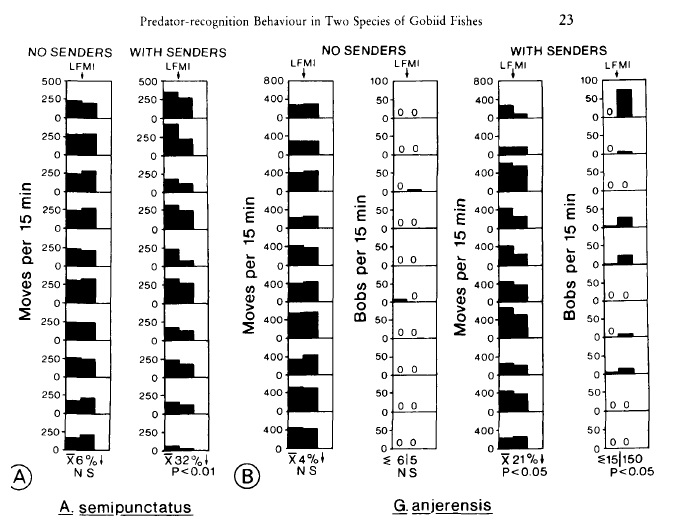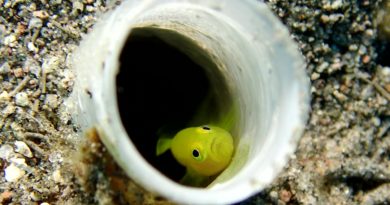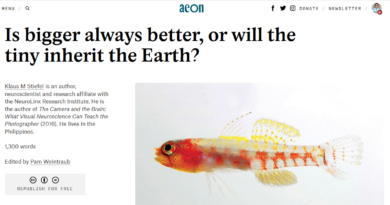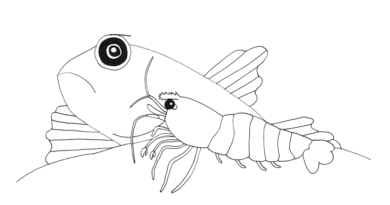Goby Bobbing
I spend a lot of time looking at small fishes. I enjoy it. During recent years I have observed, and in a few instances filmed, a type of behavior of gobies where the fish push themselves slightly upwards for a brief moment before relaxing down into its usual perching position. The gobies would do these bobs in rapid succession, for series of 2, 3 to maybe 10 bobbs.
Here is some footage of this bobbing behavior:
This is a Ctenogobiops feroculus, a shrimp-associated goby.
Here, a different goby bobbs a few times at around 1:52 minutes:
This is an individual of Tomiyamichthys oni, another shrimp-associated goby.
So, what is that Bobbing about?
Today, 2, respectively 1 year after filming the above goby bobbing, I surprisingly came across a paper form 1989 which gives a really good explanation for the goby bobbing behavior:
In this paper, the authors test of the bobbing (together with a reduction in movement) of two goby species, Asterropteryx semipunctatus and Gnatholepis anjerensis, in response to seeing a plastic model of a lizardfish, a predator of gobies. When the fish see this fake predator, the gobies move less, and start to bobb. Gobbing is an alarm signal!
But it also is a social alarm signal: Interestingly, the bobbing can be transmitted from one goby to another. In a second experiment, a second (observer) goby was in an adjacent fish tank, and could see if the first (sender) goby bobbed or moved, but could not see the plastic lizardfish. The observer goby also started to move less and bobb when the sender goby was shown the plastic lizardfish. The observer goby copied its neighbor’s behavior.
Below is the key figure from the paper: LFM1 is the Lizardfish Model 1. The downward arrow on top indicates when this plastic lizardfish was shown to the sender goby. The movement and bobbing of the second (observer) goby is shown in these retro-style plots (1989!). The higher the dark bar is, the more did the goby move, or bobb. You can see that only if a sender goby was present (“WITH SENDER” column) did the observer goby react to the lizardfish model in the neighboring tank (movement drops, bobbing starts). The observer goby communicated to the second goby via bobbing that a predator is nearby. The “NO SENDER” column is a negative control without a sender goby, as is necessary in every scientific experiment.

Probably this chain of goby bobbing-communication could continue over more than one pair of gobies, and a whole patch of gobies could in this way share information about the presence of a predator. I’m speculating here, of course, but it would be fascinating if whole communities of gobies could use this communal warning system to spread the word if one fish had seen a predator. I have not observed this, but I will pay attention in the future.
What got the gobies in my footage to bobb? Probably my presence!
On a side note, goby bobs per 15 min (gbp15m), as in the figure above, are probably my favorite unit in the history of science.
Interestingly, Asterropteryx semipunctatus and Gnatholepis anjerensis, are not associated with shrimps. Hence, the footage of Tomiyamichthys and Ctenogobiops I showed above demonstrate that the bobbing behavior is also used by shrimp-associated gobies.
Conclusions, and Advice for the Young Fish Biologist
Observe carefully!
Read a lot of papers, especially old ones!


